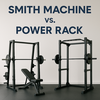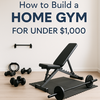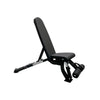Pull-ups are difficult, demanding and strenuous exercises. You need to lift all your weight with the use of your back, chest and arm muscles. It might be a daunting challenge at first, but with a bit of work and perseverance, you will be able to benefit muscles that are otherwise difficult to reach.
Before you start, make sure you have warmed up properly. Strength training puts a lot of stress on your muscles, and jumping into it without the preparation of a gradual warm up could lead to injuries.
Once your arms, back and chest muscles are a bit warmer, it is time to do the pull-up challenge. As with every difficult exercise, do not overstress yourself. Begin slowly and rest if you need it.
Pull-ups are simple because all you need is a stable overhead bar, (if you need one - check out our pull up bar range) and a good grip with your hands. But it is not as easy as it seems at first. If you want to get the full benefits from pull-ups, you need to pay attention to the grip. The way you place your hands greatly determines what muscles you will be using, how your body will be moving and the level of difficulty you will be facing.
There are two main types of hand grips:
Wide Grip
This is the more traditional grip method. Stand and reach up to the overhead bar with both hands placed slightly beyond the width of your shoulders by a few inches. Turn your palms around so that they are facing forward. When you pull yourself up, your shoulders will be performing a powerful adduction movement: that is, flexing towards you, and making your upper arms move towards your sides. This is really good for shoulder flexibility as well as muscle toning. And you will also be putting to work the large wing-like back muscles known as latissimus dorsi.
Close Grip
In this mode, your hands must grip the overhead bar exactly at shoulder level, with your palms facing forward the same way as in the wide grip. The close grip forces your upper arms to move behind you and your shoulders to extend. With the close grip you will also work on the latissimus dorsi, but there will be a big contribution from the large front chest muscles, the pectoralis major, and the biceps
Another version of the close grip is where your palms are facing you (otherwise known as chin-ups). The latissimus dorsi will still be doing most of the work, but this time the biceps will be more involved.
The close grip uses the mechanical benefit of two large and powerful muscles, front and back, which makes doing pull-ups a bit easier, and also for a greater number of repetitions.
Perhaps it would be a good idea to try a close grip before you move on to the wide grip.
While you are here, check out our most popular item we have that is a huge benefit to those who want a free standing portable chin up or pull up station.

















